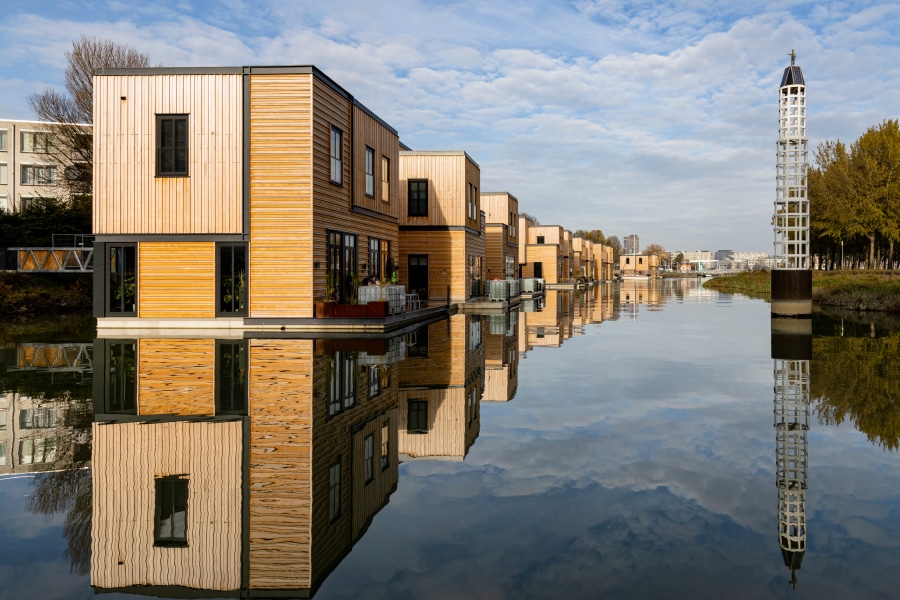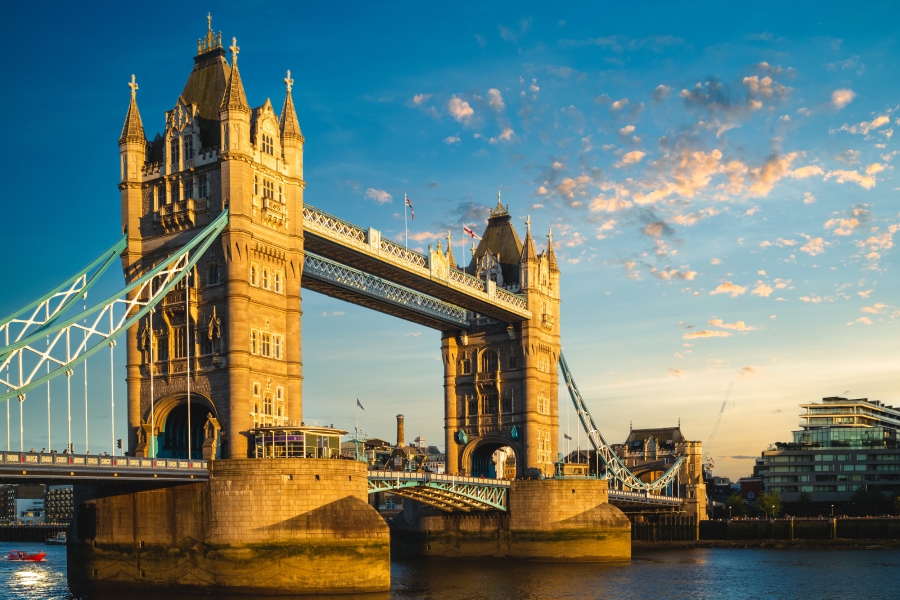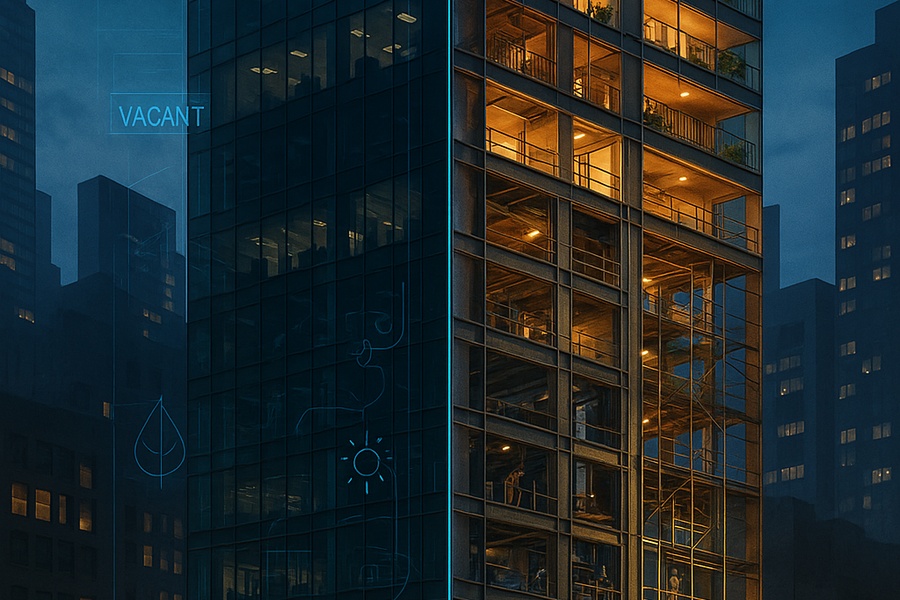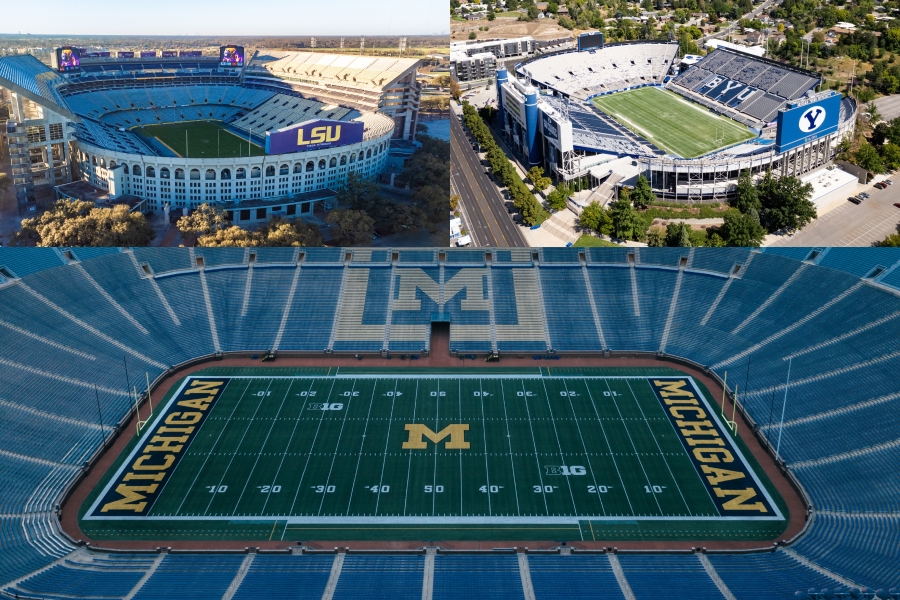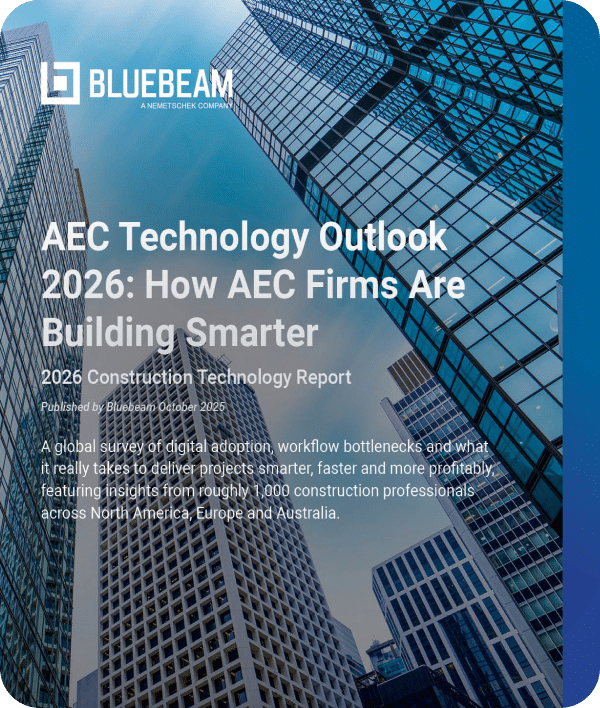As cities become denser and waterfront property grows more valuable, finding new land for development is increasingly difficult. Traditional construction methods struggle to adapt to rising sea levels and the unique challenges of coastal urbanization.
Koen Olthuis, founder of Dutch architecture firm Waterstudio, has spent years tackling this problem from a different angle: building on water. His innovative approach, as profiled in The New Yorker, is transforming floating architecture from a niche concept into a practical solution for climate resilience and sustainable urban expansion.
“Waterstudio was founded with the vision of providing innovative and sustainable solutions for the challenges of rising sea levels and climate change,” Olthuis shared in an interview with Bluebeam. “Our floating architecture stems from a passion for designing buildings that adapt to water instead of fighting against it.”
The Rise of Floating Architecture: From Necessity to Opportunity
Many countries have long histories of water-based communities, from the stilted villages of Southeast Asia to the floating markets of Amsterdam and Bangkok. But today, floating architecture is evolving beyond tradition into a modern necessity.
Olthuis believes that shifting mindsets is key to unlocking its potential.
“We saw an opportunity not only to design homes, but entire communities that could safely and sustainably exist on water,” he said. “That’s how we started focusing on floating homes, commercial buildings and even cities on water.”
Floating architecture isn’t just a response to rising sea levels. It also addresses land shortages, urban density and the need for sustainable development. By building on water, cities can expand without consuming more land or disrupting existing ecosystems.
Engineering for Water: How Floating Structures Stay Stable
Unlike traditional buildings, floating structures must account for constant movement, changing water levels and environmental forces such as wind and waves. This requires an entirely different engineering approach.
“In floating structures, the focus is on stability, durability and flexibility,” Olthuis explained. “We must consider the movement of the water, wave impact and possible variations in water levels.”
To achieve this, architects and engineers use high-density concrete platforms, advanced mooring systems and prefabricated modular construction techniques. Some key considerations include:
- Hydrodynamics: Structures must be designed to remain stable in fluctuating water conditions.
- Material Durability: Corrosion-resistant materials, such as stainless steel, treated wood and reinforced concrete, are essential.
- Energy and Utilities: Floating buildings often integrate self-sustaining systems for water filtration, energy production and waste management.
- Regulatory and Legal Considerations: Many jurisdictions lack clear building codes for floating structures, requiring close coordination with urban planners and policymakers.
“A major difference is the dynamics of water,” Olthuis said. “The structure must withstand varying water levels, currents and wind. Additionally, we deal with regulations that differ from those on land, such as permits and property rights over water.”
Designing for Sustainability: Why Floating Cities Could Be the Future
As floating architecture gains momentum, many projects now prioritize sustainability, using solar power, rainwater harvesting and energy-efficient designs to create self-sustaining water-based communities.
Some of the most ambitious floating projects include:
- The Maldives Floating City: A climate-resilient urban hub designed to accommodate rising sea levels.
- BlueTech Park (Netherlands): A mixed-use floating development featuring housing, offices and green spaces.
- Oceanix Busan (South Korea): A prototype floating city in partnership with the United Nations, designed to support climate refugees.
For Olthuis, the integration of sustainable technologies is a priority.
“We choose materials that withstand a humid and salty environment, such as stainless steel, high-density concrete and special coatings,” he explained. “These materials need to be more durable in harsh conditions, so sustainability is an absolute priority.”
Key Challenges in Floating Construction—And How to Overcome Them
Despite its benefits, floating architecture presents unique logistical and technical challenges that require digital collaboration and real-time engineering coordination. Some key hurdles include:
- Structural Integrity: Ensuring buildings can withstand water movement, wave pressure and extreme weather.
- Infrastructure Connectivity: Developing efficient solutions for water supply, sewage and energy without relying on land-based infrastructure.
- Material Transport and Construction: Floating buildings are often assembled in specialized shipyards and transported to their final location, requiring careful project coordination.
- Regulatory Hurdles: Many cities still lack clear zoning laws for floating structures, requiring custom permitting and compliance strategies.
Olthuis and his team tackle these challenges with multidisciplinary collaboration between architects, marine engineers and hydrologists.
“A typical project begins with a feasibility study where we consider the location, water depth, wave activity and climate,” he said. “Then, we design a concept that aligns with the client’s vision and work with engineers to develop a stable, safe and sustainable solution.”
Even after construction, ongoing maintenance is crucial.
“Water-based structures require regular maintenance to prevent corrosion and wear, especially with anchors and fastenings,” Olthuis added. “I advise clients to invest in periodic inspections and to choose high-quality materials to extend the lifespan.”
Looking Ahead: The Future of Floating Architecture in Global Development
With urban land becoming scarcer and climate challenges intensifying, floating architecture is no longer just a niche concept; it’s an essential strategy for sustainable development.
Olthuis believes the field will continue to evolve, with more large-scale floating projects on the horizon.
“A challenging project was the development of a floating city in a lagoon,” he shared. “The unpredictable currents and wave action required an entirely new foundation design and innovative wave breakers. We worked closely with hydrologists and marine engineers to develop a stable and safe structure.”
For architects, engineers and developers interested in floating construction, Olthuis offers this advice:
“My advice is to first gain a deep understanding of water dynamics and how they relate to construction techniques,” he said. “It requires a mindset shift, where architects don’t see water as an obstacle but as an opportunity. Collaborating with engineers and specialists in marine technology is essential.”
As cities continue adapting to climate change and population growth, floating architecture may become a mainstream solution for sustainable, adaptive urban expansion, reshaping the future of construction and design in the process.

